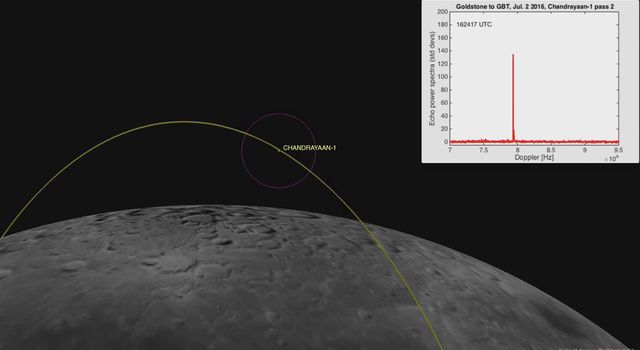India’s first lunar orbiter was launched in 2008 and lost less than a year later. A comms failure ended the mission abruptly, but Chandrayaan-1 still lays claim to a piece of space history: helping discover water ice on the Moon’s surface.
At the time, NASA’s director of planetary science described the find as the “holy grail” of lunar science. Now, nearly eight years late, the orbiter has become a part of another discovery story: its own.
NASA has recently announced that it tracked down the craft last year using a novel radar technique which could one day aid human missions.
Searching for derelict space craft in the Moon’s orbit is a challenging task, especially when the craft is just five feet wide. The bright glare of our natural satellite means that optical telescopes just aren’t up to the job.

Instead, NASA sent used its Goldstone Deep Space Communications Complex in California to send microwaves and the Green Bank Telescope in West Virginia to detect them if they bounced back.
On 2 July 2016, NASA pointed the radar and telescope at a point just above the Moon’s north pole. Chandrayaan-1 was in a polar orbit so they expected it to cross the radar beam, and it did – twice during the four hour session.
It wasn’t the only craft found during the mission. NASA scientists also discovered the location of the Lunar Reconnaissance Orbiter (LRO).
“Finding LRO was relatively easy, as we were working with the mission’s navigators and had precise orbit data where it was located,”said Marina Brozovic, a NASA radar scientist and principal investigator.
“Finding India’s Chandrayaan-1 required a bit more detective work because the last contact with the spacecraft was in August of 2009.”
NASA’s scientists are now excited about the possibility of using ground-based radars during both robotic and human missions. It could provide a collisional hazard assessment tool, or a safety mechanism for crafts that face navigation and communication problems.
